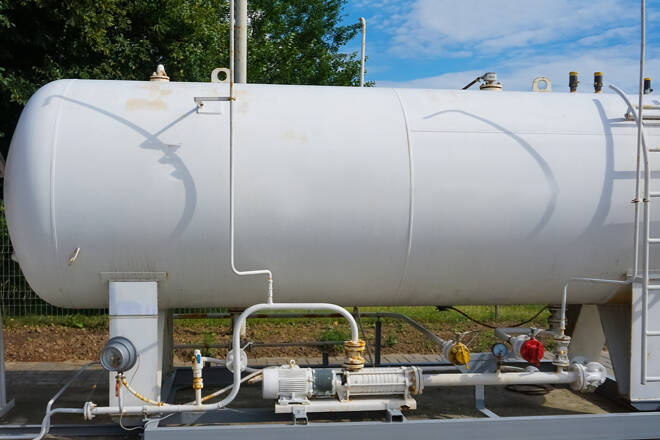Advertisement
Advertisement
Natural Gas Price Fundamental Daily Forecast – Low Demand, High Production Cap Gains, While Wildcards Underpin
By:
There are two wildcards that could spike prices higher, the specter of a rail workers strike and the return to service of the Freeport LNG terminal.
Natural gas futures are edging higher on Tuesday after a three-day setback. Helping to underpin the market is a surge in crude oil prices, however, gains are likely being capped by forecasts calling for normal temperatures the first week in December.
At 12:10 GMT, January natural gas futures are trading $7.284, up $0.088 or +1.22%. On Monday, the United States Natural Gas Fund ETF (UNG) settled at $22.34, down $0.36 or -1.59%.
Crude oil prices are trading higher for a second session on Tuesday on hopes that China will ease its COVID restrictions and rumors that OPEC and its allies could announce another cut in output when it meets on December 4.
Monday Recap – Prices Dip on Lower Demand Forecast
Natural gas futures fell on the expiration of the December futures contract on Monday, as forecasts for demand dropped and production rose to near all-time highs. Meanwhile, there has been no fresh news on when Freeport LNG would resume production.
Traders were paying particular attention to the 6-10 day weather forecast that showed a little bearish moderation.
Refinitiv Supply/Demand Forecast
Refinitiv projected that average U.S. gas demand, including exports, would ball to 116 billion feet per day (bcfd) this week from 125.8 bcfd in the prior week.
The data company also showed average gas output in the U.S. Lower 48 states rose to 99.6 bcfd so far in November, up from a monthly record of 99.4 bcfd in October.
No News on Freeport LNG Restart
Once again, traders had more questions than answers about whether Freeport LNG will be able to restart its liquefied natural gas (LNG) export plant in Texas in mid-December as planned.
That will be a major event because once the 2.1-billion-cubic-feet-per-day (bcfd) plant restarts it will consume U.S. gas to turn it into LNG for export, boosting demand for gas at the same time that cold winter weather will boost heating demand.
Short-Term Outlook
First the bearish news. NatGasWeather said forecasts over the weekend extended warmer trends for the first week of December and showed above-normal temperatures over the southern and eastern portions of the Lower 48.
However, this may be short-lived event since, “Much of the weather data favors a rather chilly U.S. pattern setting up Dec. 8-11,” a timeframe where “colder trends were observed” in the latest model runs, the firm said.
There are two wildcards that could spike prices higher. The first is the specter of a rail workers strike and the second, the return to service of the Freeport LNG terminal.
For a look at all of today’s economic events, check out our economic calendar.
About the Author
James Hyerczykauthor
James Hyerczyk is a U.S. based seasoned technical analyst and educator with over 40 years of experience in market analysis and trading, specializing in chart patterns and price movement. He is the author of two books on technical analysis and has a background in both futures and stock markets.
Advertisement
